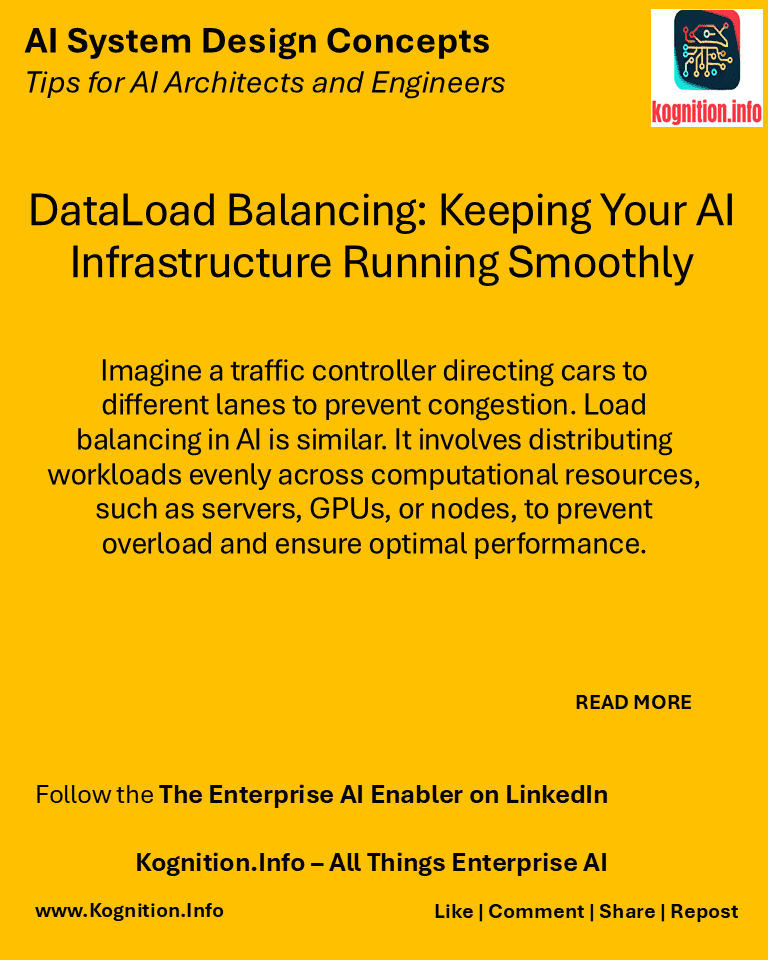
Imagine a traffic controller directing cars to different lanes to prevent congestion. Load balancing in AI is similar. It involves distributing workloads evenly across computational resources, such as servers, GPUs, or nodes, to prevent overload and ensure optimal performance.
Use cases:
- Handling high traffic: Distributing incoming requests across multiple servers to prevent overload and maintain responsiveness.
- Optimizing resource utilization: Ensuring that all computational resources are utilized effectively.
- Preventing bottlenecks: Avoiding performance degradation caused by overloaded resources.
How?
- Choose a load balancing algorithm: Select an algorithm like round robin, least connections, or weighted load balancing based on the specific needs.
- Implement a load balancer: Use hardware or software load balancers to distribute traffic.
- Monitor performance: Track resource utilization and adjust load balancing parameters as needed.
Benefits:
- Improved performance: Prevents overload and maintains optimal performance under high demand.
- Increased reliability: Reduces the risk of system failure due to overloaded resources.
- Enhanced scalability: Allows for easy scaling by adding more resources to the pool.
Potential pitfalls:
- Single point of failure: The load balancer itself can become a single point of failure if not properly configured.
- Complexity: Implementing and managing load balancing can be complex, especially in dynamic environments.
- Cost: Hardware load balancers can be expensive.
